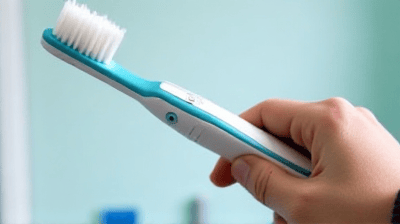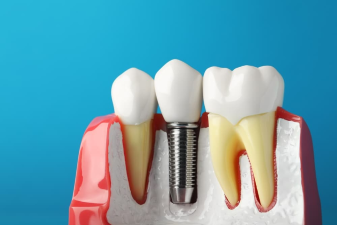Maintaining good oral hygiene is essential for overall health, and one of the most fundamental tools in your dental care arsenal is your toothbrush. However, many people overlook the importance of replacing their toothbrush regularly. An outdated toothbrush can harbor bacteria and become ineffective at cleaning teeth properly, leading to potential dental health issues.

The Importance of a Fresh Toothbrush
A toothbrush is designed to remove plaque, food particles, and bacteria from your teeth and gums. Over time, the bristles become worn down, and their effectiveness diminishes. Additionally, old toothbrushes can trap bacteria, which poses a risk to your oral health. Regularly replacing your toothbrush is crucial for maintaining optimal dental hygiene and overall health.
Recommended Replacement Frequency
Most dental professionals recommend replacing your toothbrush every three to four months. However, there are exceptions based on individual circumstances, such as:
- Worn Bristles: If you notice that the bristles are frayed or splayed before the three-month mark, it is time to replace your toothbrush.
- Illness: If you have been sick, especially with a viral or bacterial infection, consider replacing your toothbrush once you recover.
- Children’s Toothbrushes: Children’s toothbrushes should be replaced more frequently due to their tendency to wear out faster.
By adhering to these guidelines, you can ensure that your toothbrush remains effective in maintaining your oral hygiene.
Signs That You Are Overdue for a New Toothbrush
Sometimes, it may not be obvious when it is time to replace your toothbrush. Here are some signs that indicate you might be overdue for a new one:
1. Frayed or Worn Bristles
One of the most significant indicators that it is time to replace your toothbrush is the condition of the bristles. When the bristles become frayed, splayed, or worn, they lose their ability to effectively remove plaque and debris. You should visually inspect your toothbrush regularly. If the bristles look bent or misshapen, it is time for a replacement.
2. Discoloration
Over time, toothbrush bristles can become discolored due to the accumulation of plaque and bacteria. While coloring may not directly affect the toothbrush’s performance, it is a sign of the buildup of bacteria. If you notice significant discoloration, consider replacing your toothbrush.
3. Bad Odor
If your toothbrush has developed a foul odor, it is a clear signal that it has been exposed to bacteria for too long. A fresh toothbrush should not emit an unpleasant smell. If your toothbrush has a bad odor, it is time for a new one.
4. After Illness
If you have recently had a cold, flu, or any other contagious illness, it is wise to replace your toothbrush. Germs can linger on the bristles, increasing the risk of re-infection. To maintain your health, replace your toothbrush after you recover from an illness.
5. Damage to the Handle
If the handle of your toothbrush is damaged or broken, it may not provide the grip necessary for effective brushing. A toothbrush with a compromised handle can lead to improper brushing techniques. If you notice any physical damage, replace your toothbrush immediately.
6. Change in Oral Health Needs
As your dental health evolves, so too may your toothbrush needs. For example, if your dentist recommends a softer bristle toothbrush due to sensitivity, consider transitioning to one that accommodates your changing needs. Any changes in your healthcare regimen warrant a reassessment of your toothbrush as well.

Factors Affecting Toothbrush Lifespan
Various factors can affect how long your toothbrush lasts and when it should be replaced. Understanding these factors may help you gauge the right time for a new toothbrush.
1. Brushing Habits
The frequency and technique of your brushing can impact the wear and tear on your toothbrush. If you brush vigorously or too often, your toothbrush may wear down faster. Being aware of your brushing habits can help you determine how often you need a replacement.
2. Type of Brush
The type of toothbrush you use can also influence its lifespan. Soft bristle toothbrushes typically wear out more quickly than medium or hard bristle brushes. If you use an electric toothbrush, the head may need to be replaced every three months or sooner, depending on usage.
3. Storage Conditions
How you store your toothbrush can affect its longevity. Keeping your toothbrush in a closed container or covering it may create a moist environment conducive to bacterial growth. Ensure that your toothbrush stands upright and air dries to maintain its cleanliness and effectiveness.
4. Family Shared Toothbrushes
If you share your toothbrush (which is not recommended due to hygiene concerns), it will need to be replaced more frequently. Each person introduces different bacteria, increasing the risk of contamination. It is always best to use your own toothbrush.
Maintaining Your Toothbrush
To maximize your toothbrush's effectiveness and lifespan, adopting proper care practices is essential. Here are tips for maintaining your toothbrush:
1. Rinse Thoroughly After Use
After brushing, thoroughly rinse your toothbrush under water to remove toothpaste and debris. This will help prevent bacteria from accumulating on the bristles.
2. Store Upright
Store your toothbrush in an upright position to air dry. Avoid storing it in a closed container, as this can create a moist environment that encourages bacterial growth.
3. Avoid Sharing
Never share your toothbrush with anyone, including family members. Sharing toothbrushes can transfer bacteria and lead to oral health issues.
4. Replace Periodically
Set a reminder to replace your toothbrush every three to four months. Keeping track of when you last replaced it can help ensure you stay on top of your oral hygiene routine.
5. Disinfecting
Consider disinfecting your toothbrush periodically, especially after illness. You can soak it in a mixture of hydrogen peroxide and water for a few minutes, then rinse thoroughly.
Choosing the Right Toothbrush
When it is time to replace your toothbrush, consider the following factors to choose the right one for your needs:
1. Bristle Firmness
Choose a toothbrush with bristles that match your dental needs. Soft bristles are generally recommended for most people, as they are less likely to irritate gums and enamel. Individuals with sensitive teeth may benefit from ultra-soft bristles.
2. Size and Shape
The size of your toothbrush head should allow you to reach all areas of your mouth comfortably. A smaller head is usually better for accessing hard-to-reach areas, while a larger head may cover more surface area more quickly.
3. Manual vs. Electric
Decide whether a manual or electric toothbrush better suits your needs. Electric toothbrushes can be more effective in removing plaque and may be easier for those with limited dexterity to use. However, a manual toothbrush can be just as effective if used correctly.
4. Specialty Brushes
Consider specialty toothbrushes for specific needs. For example, orthodontic toothbrushes are designed for individuals with braces, while individuals with gums that are easily irritated may benefit from a soft-bristle toothbrush designed for sensitive teeth.
Conclusion
Proper toothbrush care is an essential component of maintaining excellent oral hygiene. Regularly replacing your toothbrush helps ensure effective plaque removal and reduces the risk of oral health issues. By being mindful of the signs indicating it is time to replace your toothbrush, you can take proactive steps toward optimal dental health.
Key Takeaways
- Replace your toothbrush every three to four months or sooner if the bristles are worn or damaged.
- Look for signs such as frayed bristles, discoloration, and bad odors, along with any recent illnesses.
- Maintain proper care of your toothbrush by rinsing it after use, storing it upright, and avoiding sharing with others.
By following these guidelines and prioritizing your oral hygiene routine, you can enhance your dental health and ensure a brighter, healthier smile.



